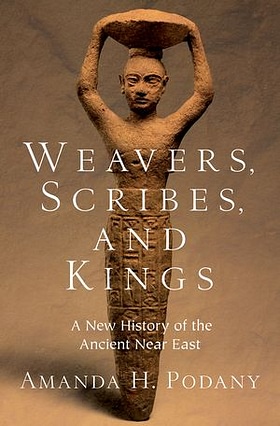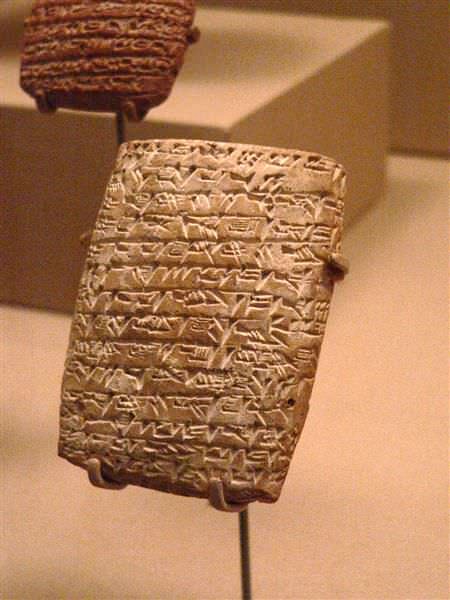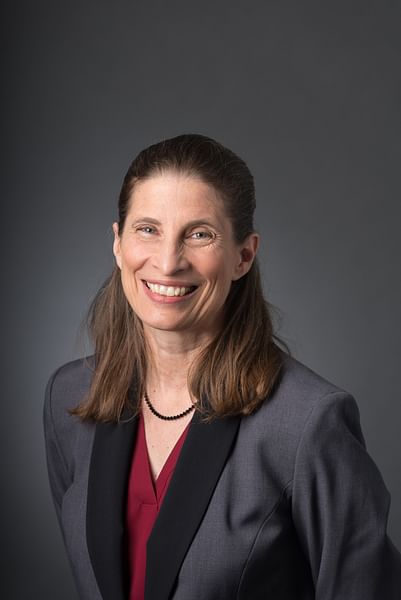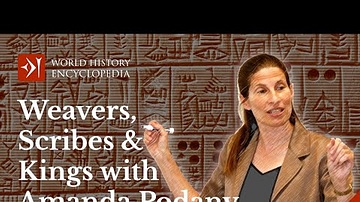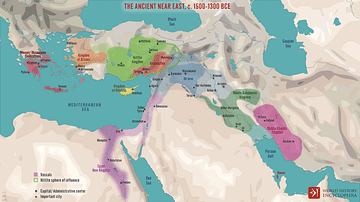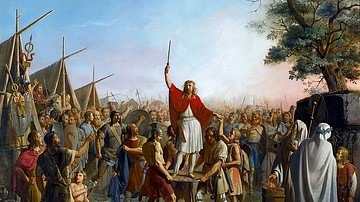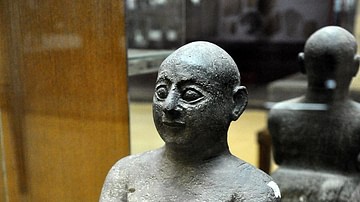In this interview, World History Encyclopedia sits down with author and Assyriologist Amanda H. Podany to learn all about her new book Weavers, Scribes, and Kings: A New History of the Ancient Near East published by Oxford University Press.
Kelly: Amanda, thank you so much for joining me today.
Amanda: It's a pleasure. Thank you.
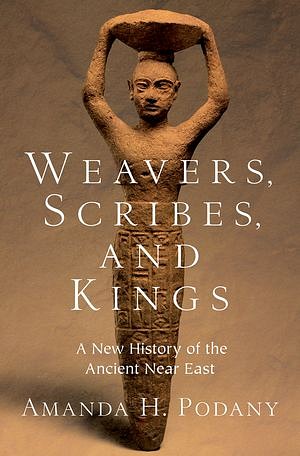
Kelly: I'm really looking forward to speaking to you about your new book, Weavers, Scribes, and Kings. So, why don't we start off by you telling us a bit about what the book is all about?
Amanda: The book is a history of the ancient Near East from 3500 BCE to 323 BCE. But rather than being a traditional political history, it's a history that looks at the lives of real people, and for each era, I take a number of people that I look into their experiences, their professions, their whole world in order to understand the bigger picture of the world in which they lived. So that rather than, as I say, rather than being a political history, it's like a series of social histories, a series of vignettes of people's lives throughout this three thousand year period.
Kelly: That's pretty incredible, because I feel like most books on ancient history very commonly focus on kings and militaries, because that's sort of where we have the most information. Can you tell us a bit about the kinds of people or the kinds of jobs that they did?
Amanda: Yes, I had a list when I started writing the book of the professions that I wanted to look at, and I was looking for people in those professions. Obviously, there are lots of kings, there are queens, there are priestesses. There are elites in the book, but there are also, as in the title, weavers and scribes are very important people in this community. And there are brewers and innkeepers and farmers and soldiers and just so many different professions that are represented in the texts. And that were people who were important to the culture. In each case, I've tried to find a named person. So, if I'm writing about weavers, I have a number of weavers whose names we know, who are real people, whose lives we can actually look at. It's not just a sort of generic exploration of their experience. It's specific. This is a person who lived, who is in the records, who we know about.
Kelly: That must have been such a sort of intimate experience, actually looking into specific people and specific lives. Have you done this kind of research before, or is this sort of a brand-new experience for you?
Amanda: It sort of draws out of research I've done in the past, partly because anyone who studies cuneiform records, this is what we do. The cuneiform records are full of people. When I was doing my more specific research on a kingdom called Hana, which is in the second millennium BCE, the documents are about individuals. So, for example, there's a particular little neighbourhood in a town, and I studied the families and their family trees and who was related to whom and who lived next door to whom, and that's very natural because that's what the documents have. That's what they include. But I think your point about this book, what was really fun for me in terms of writing it was getting to know all these different people in different periods. I describe it in the book as though it's almost like going into someone's house and sitting down and having a cup of tea with them, or in their case, it would have been a beer, because they drank a lot of beer, sitting down over a meal and finding out about their world. I think as I was writing it, I very much felt I was having that experience, that these people gradually sort of opened up the more research I did, the more I read about them. And so, one feels that you come away really having met someone rather than just having read about them.
Kelly: That must be such an incredible and also potentially a surreal experience since these people lived so long ago. You mentioned cuneiform tablets. Are they the main kinds of sources that you used, or were there different types of resources that you got to work with?
Amanda: Most of the written documents are in cuneiform, and that was by design. So the whole Middle East, the ancient Middle East, a lot of it used cuneiform, and that's what I'm trained in. Some parts of the Middle East used a hieroglyphic script that they wrote on papyrus and that I don't read. The regions of the Middle East that I can't read in the original documents, I decided I wouldn't put in this. Not just because I couldn't read the documents, but because the cuneiform area forms a real cultural whole. It makes sense as a culture to look at together, and that includes what is now Iraq, Syria, what is now Turkey and parts of Iran, and parts of the region of Jordan and Israel at various times, but not throughout the whole period. I left Egypt out because Egypt has its very distinctive history. Egypt comes in occasionally when it's in contact with the cuneiform regions, but so much is known about Egypt, and it is so widely discussed. There are a lot of books on ancient Egypt that I wanted to devote the pages that I had to a field that is much less well-known, and that's this region of the cuneiform lands.
But the documents yes, there are about half a million cuneiform documents that are known that are in museums around the world. It's a vast corpus, and it's fascinating. I mean, there's so many different types of texts, so many different hundreds of thousands of people named in them. Just incredible. And, there's also the archaeology. So, the other sort of major source for the book is the sites, the archaeological sites from which these tablets have been found, and they're very intimately connected because you don't have the tablets unless you have the archaeology, they all were dug up out of the ground. We can see it both as a physical artifactual source material that is available for this, and also the cuneiform records that very closely tie in with them.
Kelly: So, you read the numerous different languages that cuneiform was used to write. Did you do your own translations of these documents?
Amanda: Not for the most part. I mean, with three thousand years of history, it's just too much to have done new translations, and I didn't really need to, because most of these documents that I was using are available in translation already, or at least they're in a volume where you can find them. What I did was, after I had chosen the professions that I was interested in, I looked at what other scholars had already written, because there's so much written in this field. It's a vast bibliography of sources. And then, having found what's already written, I would then go back and look at the sources in translation and in some cases, look at the original sources in the cuneiform versions. But that was mostly just to check on a word or two, you know, rather than doing the whole thing from scratch. It would be it's a very time-consuming thing to do, translation, and I couldn't possibly have done it for this.
Kelly: No, you'd still be writing the book!
Amanda: Absolutely. It would be a lifetime of work at that point.
Kelly: As you mentioned, there are so many books on the ancient world, why did you decide to write this book?
Amanda: Well, there are a lot of books on the ancient world. There's surprisingly fewer than you would think on the ancient Middle East for a general public. There's vast, vast, vast numbers within the field for people writing for one another. But I think that there is sort of almost a hole in the knowledge of a lot of people about the ancient world. They know about Greece and Rome. They know about Egypt; they know about Israel. But for whatever reason, the Middle East hasn't made that same kind of impact. And of course, there's, and I'm not bringing up here China and India and Africa and the Americas, but just within the region that I'm looking at, the Middle East is surprisingly less known other than the biblical history. What I wanted to do was to try and make available to a general reading audience some of the amazing work that's been done, the research that's been done, the sources that have been read, the interpretations that have been made of these, and sort of take my colleagues work and get it out to a wider public, as well as my own work, obviously. But it is so fascinating, and it is such a big part of history.
I think one of the things that people are often surprised by is that this isn't just a short period of time, it's three thousand years that this civilization continued and thrived. Since the beginning of urban culture, three-fifths of it was this period. It's not something that we can just sort of glance over and say, okay, well done with that. Let's move on. There is so much depth to it that is worth looking at.
Kelly: Oh, yeah, it's massive. How was the process, taking information and work from a purely academic space and then transferring it into one for a wider, general population?
Amanda: This is one of the things I love to do, because I find it so fascinating that I am really inspired to try and make it something that will be interesting to other people as well. I think one of the reasons that I feel that perhaps I can do this is I've been teaching this material for a very long time, and I see what my students find fascinating and what surprises them and what questions they have. And based on that, I had a sense of what I thought would be fascinating in the book. I think it's not as hard as you would think to translate what scholars have written into language that is just more accessible, because they've done a wonderful job already. I mean, I'm not suggesting that I am somehow taking something that was very obscure and making it accessible. They've done that work. It's just that it's been published in academic journals that are hard to find if you're a general reader. They've been published in books that may be very expensive, that are from academic publishers. It just felt as though this is a way of kind of opening the window to this field for people where they can then go and read the works if they're interested by the scholars who have worked on it.
Kelly: So obviously you have been working in the field, you have so much knowledge about the ancient Near East. Did anything surprise you or interest you more than you thought it would whilst doing the research for this book?
Amanda: I was surprised, I think, by some of the continuities because my field where I do my research is in the second millennium BCE. Especially the middle of the second millennium, so sort of 1800 to 1300 BCE, mostly. When I'm writing the chapters outside of that period, although I've taught this stuff before, it's not where I do my research. I think I was really struck by the many things that were shared throughout the period. So, from the beginnings of cities in 3500 all the way to Alexander the Great, many of the same institutions existed and were viewed in the same way. In some ways, you would think it perhaps a conservative culture in that they kept these systems going. But at the same time a very successful, stable culture that in spite of the fact that there were invasions and that there were language changes, for example, they worship the same gods, they lived in the same cities. They used the same writing system. They cared about many of the same things. They had the same types of professions, and some of the things that I already knew just were really emphasized as I did my research.
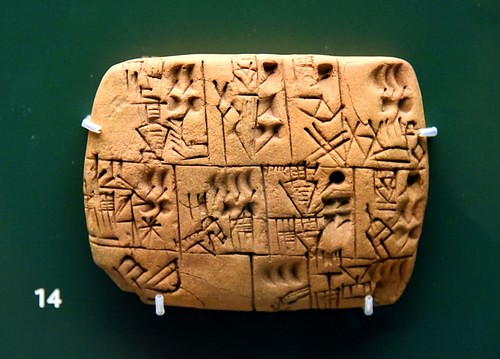
For example, I've done a previous book about the relations between states in the ancient world and especially about diplomacy and trade, and you see this diplomacy, this desire for reaching peace agreements from the very beginnings of civilization, of ancient Near Eastern civilization, all the way up to Alexander the Great and beyond, of course, but that was where I stopped the book. But the desire for peace is there. Even though they went to war, they wanted peace, and you see that over and over again. And the trade relationships that they had throughout this period, there was always trade going on. One thing that's particularly striking is that one of the most important traded materials were textiles. And that's why I put weavers in the title, because the people of the ancient Middle East had in different regions, they had different natural resources, but in Mesopotamia, what is now Iraq, and in Syria as well, one of the main resources they had was sheep. And those sheep produced wool and they made apparently extraordinary textiles. They don't survive, none of these are still to be seen. But the descriptions of them, the amount of time they took to make them, means that this was a really, really beautiful art that they made. And that was one of their major exports. And so, throughout this period, the women who did the weaving, and it was largely women, were really central to the economy. They were the ones producing these amazing objects that were then traded or given in diplomatic gifts. And women were often also in charge of the weaving houses. So, this was a very female enterprise for much of ancient Middle Eastern history, and you see that from very beginning, right up to the last period that I was looking at.
Kelly: That's incredible. Was there a lot about women, were they equal?
Amanda: It's a patriarchal society, so women weren't running things. But that said, women had a lot of autonomy in various periods. They weren't veiled for the most part. They could represent themselves in court, they could own property. And they did have a number of professions in which they were dominant, and weaving was one of them, innkeeping, and brewing were often female professions. They also, very importantly, played roles as priestesses and queens that were really powerful positions. These were women who had significant power. They would control huge estates of land and herds of sheep and goats and fisheries and all kinds of things. And there would be a woman in charge if it was a high priestess of a temple, she was the top person. One thing I tried to do in the book, though, was to be true to the time period in that women are not an add-on at all in ancient Middle Eastern history. And so, in each chapter, if there's an important group of women or important women, they're in there. Not just, oh, and we're going to add a woman here, they're there because they were central. I think that's so important to realize that we don't have to look for them. It's not like, oh gosh, better find some women. They are everywhere in the history, and I think perhaps because they weren't rulers, there are no really ruling queens who ruled alone. There are certainly women who ruled with their husbands. But I think if you were just doing a traditional king-by-king history, they get left out. But if you go anything even a tiny bit beyond that, the women are everywhere, and they need to be in the story.
Kelly: That's brilliant. I think for our last question - what is one thing that you think that people should know about your book or the topic in general?
Amanda: I think they should realize that people in the ancient world and this isn't just the ancient Middle East, this is in general, they were absolutely human. They had emotions, they had things they passionately cared about. They were as human as we are in all the same ways. They had a sense of humour, they worried about things, they were civil to each other, they cared about their children. There's so much that we share. The shared humanity is really there. I think that the further away in time we are from people, the more we tend to imagine them as almost cartoon characters, as if they couldn't really have been as real as we are. What I hope people get out of reading the book is to get a sense of that humanity, that shared humanity that we have with them.
Kelly: What a wonderful place to leave it! Thank you so much, Amanda, for joining me today.
Amanda: Thank you so much. I really enjoyed it.
